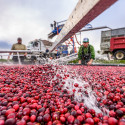With milk testing and new tools, UW scientists are helping prevent bird flu outbreaks in Wisconsin and beyond
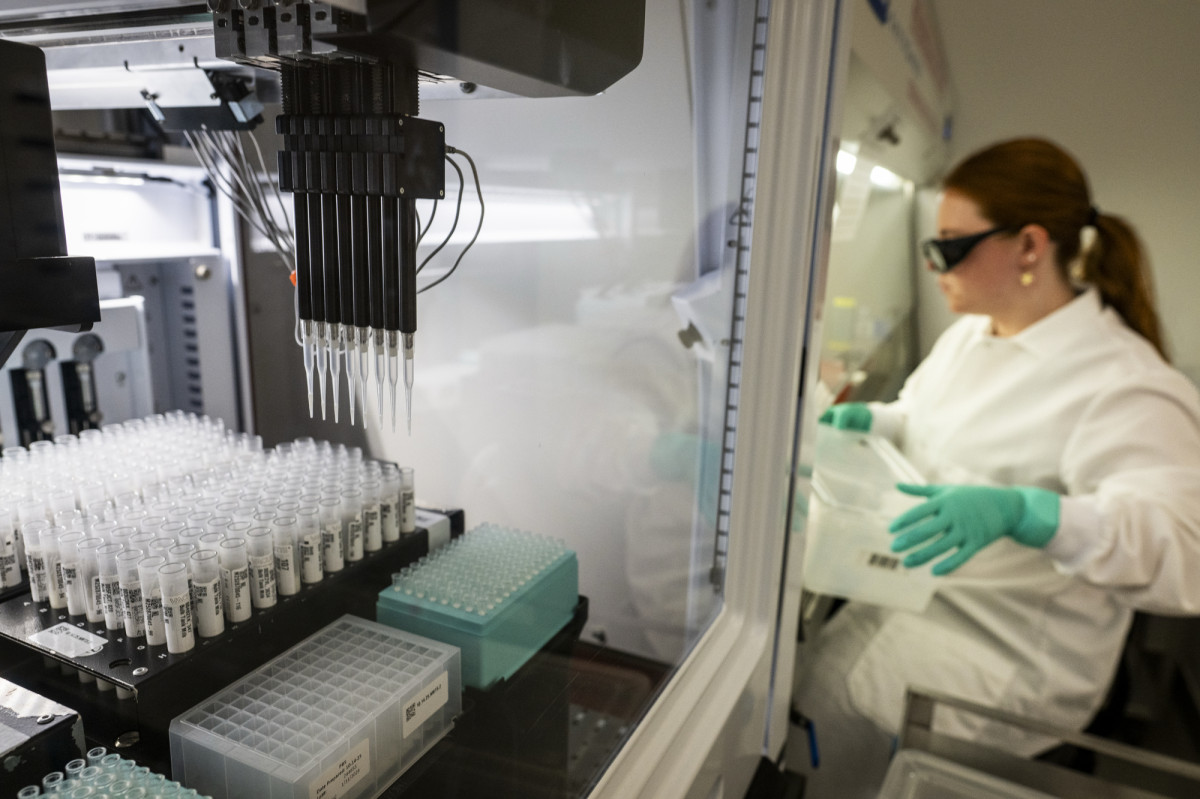
On a recent Thursday morning, Becky was hard at work at the University of Wisconsin–Madison’s Wisconsin Veterinary Diagnostic Laboratory (WVDL). A few test tubes at a time, hundreds of milk samples were carefully poured, measured and prepared for testing.
Becky doesn’t wear a typical lab coat or safety glasses. Why? Because Becky is a Biomek i5 — that is, a robot.
The automated but closely supervised liquid handler helps streamline and enhance laboratory workflows. And its efficiency is among the reasons that WVDL has emerged as a national leader in the response to H5N1 avian influenza on dairy farms.
Each month, WVDL tests at least one milk sample from every dairy farm in Wisconsin. WVDL’s scientists receive, process, prepare, test and log about 5,000 milk samples per month — all to help prevent an H5N1 outbreak among Wisconsin dairy cattle. The spread of H5N1 would have a potentially significant consequence: the more the virus circulates, the greater the chance new, more dangerous strains could emerge — strains capable of causing severe illness and death across multiple species, including humans. UW–Madison experts say the risk of this is currently low.
The sizable effort is part of the U.S. Department of Agriculture’s National Milk Testing Strategy, which launched in December 2024 after the bird flu was detected in dairy cattle in some states. The program’s goal is “to go from unknown prevalence to disease freedom across the country,” says Keith Poulsen, director of WVDL and a faculty member at the UW School of Veterinary Medicine (SVM).
A federal order bolstering the testing strategy mandates that herd owners with H5N1-positive cattle must submit data to support contact tracing and disease surveillance. It also requires dairy farms and entities handling milk for pasteurization to provide raw milk samples for testing. WVDL, which is designated a Level 1 National Animal Health Laboratory Network lab, plays a primary role in that testing.
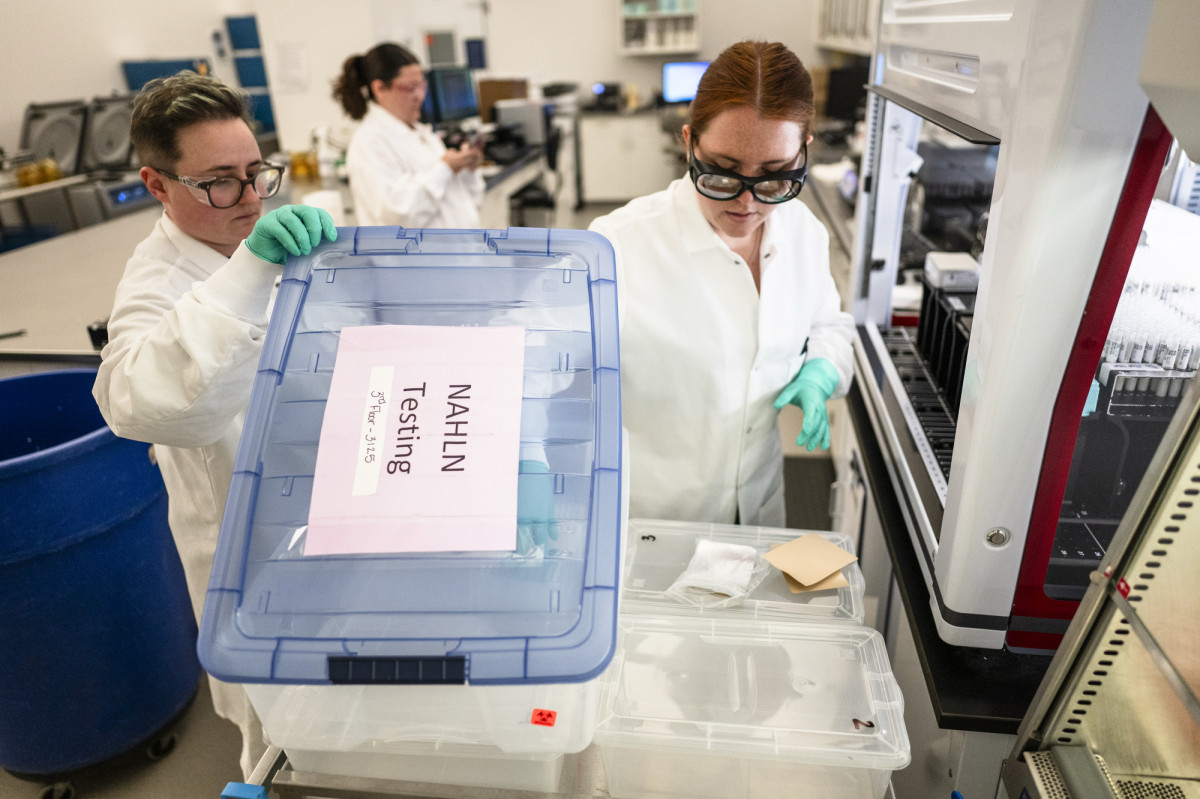
The process is time- and labor-intensive. After Becky has prepared the milk samples — which takes 45 minutes to an hour for 96 samples — they are transported to the WVDL’s virology section for testing. Over the course of several hours, microbiologists prepare and perform two types of tests: a PCR test, which searches for active infections, and an ELISA antibody test, which looks for evidence of prior infection.
“Whether it’s on a single dairy farm or throughout an entire state, the most important part of managing any infectious disease — whether it’s COVID-19, brucellosis, foot-and-mouth disease, or H5N1 — is that you know where the virus is, and more importantly, where the virus is not,” says Poulsen, adding that surveillance allows for the preservation of public health resources.
“The milk testing strategy is working,” he adds. “Testing has already identified a new H5N1 strain in the Southwest and continues to catch emerging infections in other states.”
To date, avian flu has not been detected among Wisconsin dairy cattle.
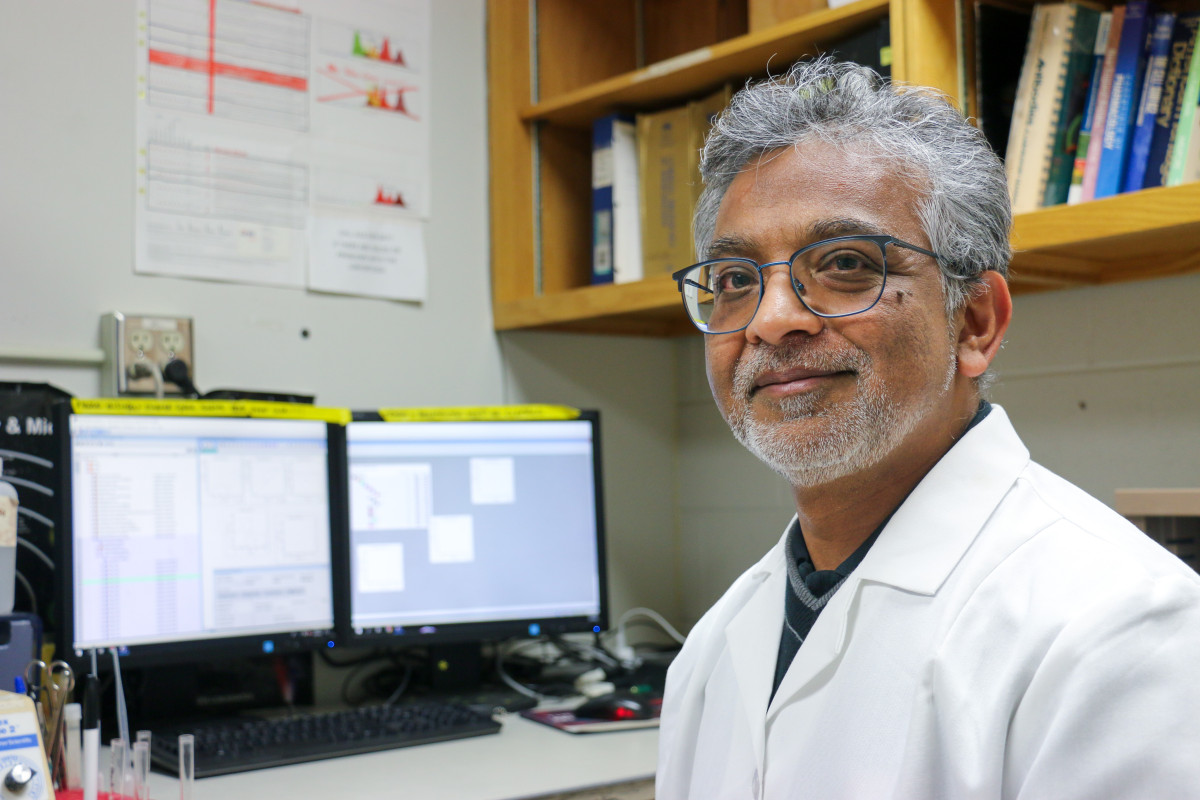
Tools to fight the virus
Researchers at the SVM are on the front lines of understanding H5N1 and developing tools to fight the virus.
H5N1 appears to spread among dairy cows not through the upper respiratory tract, the usual route for flu viruses, but through the udders after cows encounter contaminated milking equipment.
That presents two challenges to Professors Marulasiddappa Suresh and Yoshihiro Kawaoka, in the school’s Department of Pathobiological Sciences, who are working to develop a universal influenza vaccine to protect cattle against H5N1. Not only do the animals need to be protected against respiratory transmission, but they also need safeguards against infection via their mammary glands — something that’s never been done before, Suresh says. This is especially important because the animals have considerably worse symptoms when they are infected via their udders.
The scientists are conducting immunogenicity studies, which test to see whether a vaccine candidate stimulates an immune response. Early results have been remarkably promising, says Suresh, who also serves as the school’s associate dean for research and graduate training.
The researchers have been able to elicit antibodies in both the blood and milk of cows that have received the vaccine. Antibodies help neutralize the virus before it can infect cells. They have also detected a T-cell response in the cows’ blood. T-cells target and kill infected cells.
The early success leaves Suresh optimistic that a vaccine that provides “two-pronged immunity” is possible.
“This was an unbelievably successful experiment,” Suresh says. The scientists are currently preparing their work for publication.
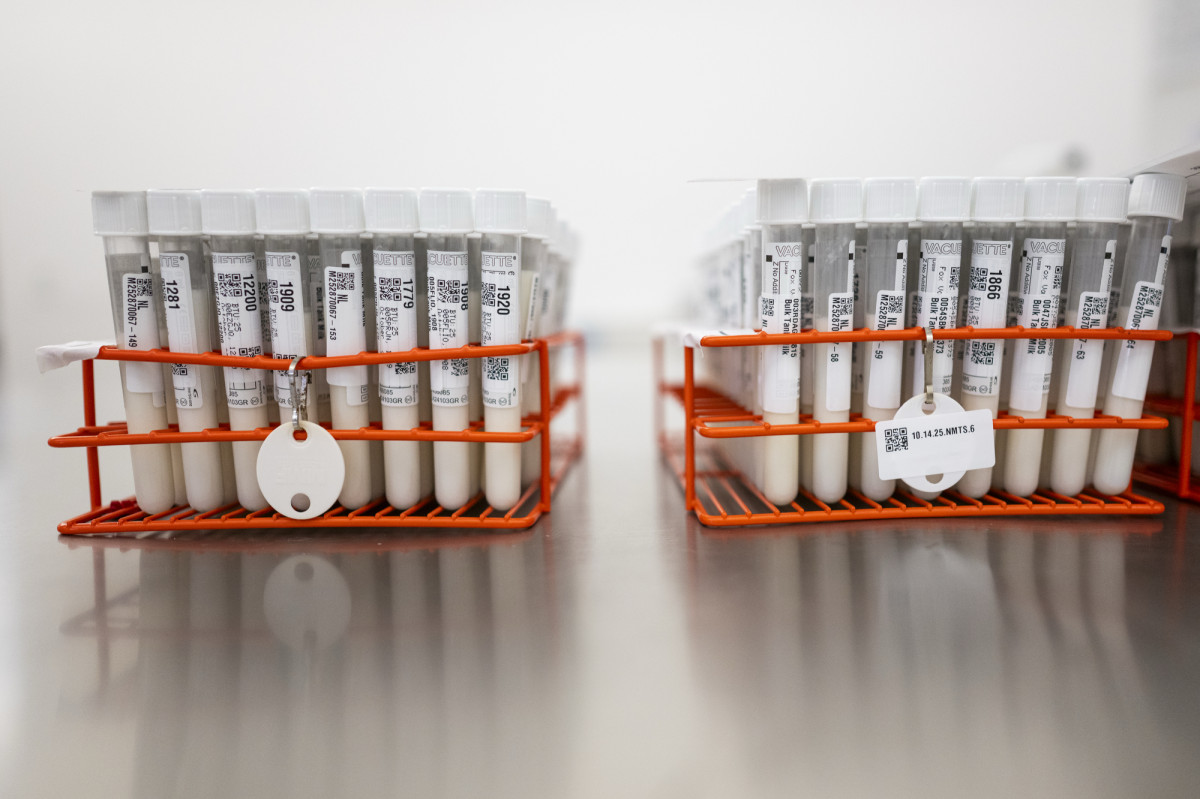
Beyond the dairy industry
According to Poulsen, the National Milk Testing Strategy also has broader implications beyond the important work of keeping animals and humans healthy — it also protects the economy and national security.
Agriculture, including Wisconsin’s dairy industry, is an important source of trade between the United States and other countries, “and our trading partners want to know what’s happening with a globally reportable disease,” Poulsen says.
Trade, economic, and food supply security are all important facets of national security, he adds.
“The testing strategy is a powerful reminder of why taking a holistic view is vital to understanding the importance of public health work,” Poulsen says. “This isn’t just for dairy farmers. This is about keeping our economy strong and the country safe.”

